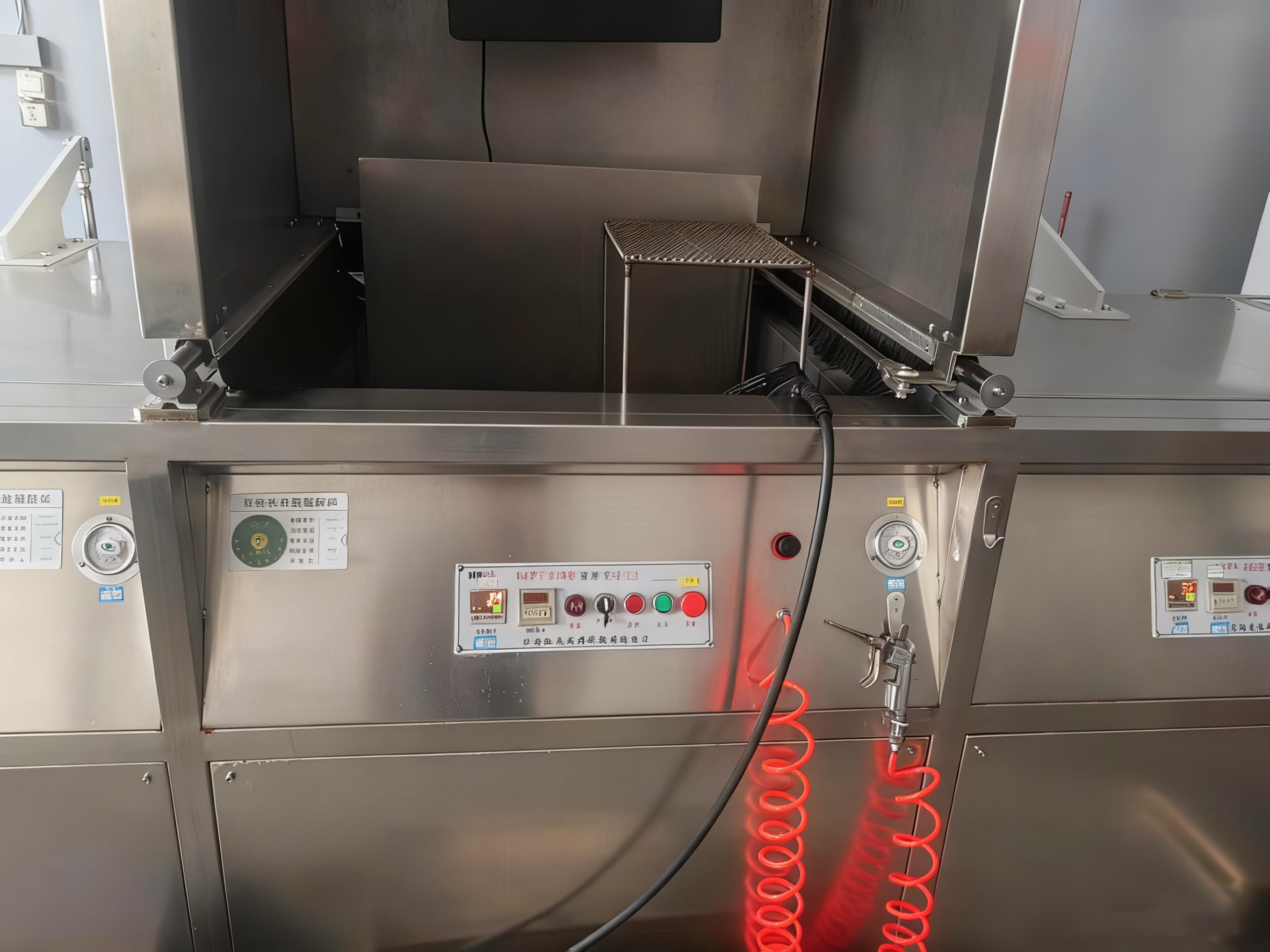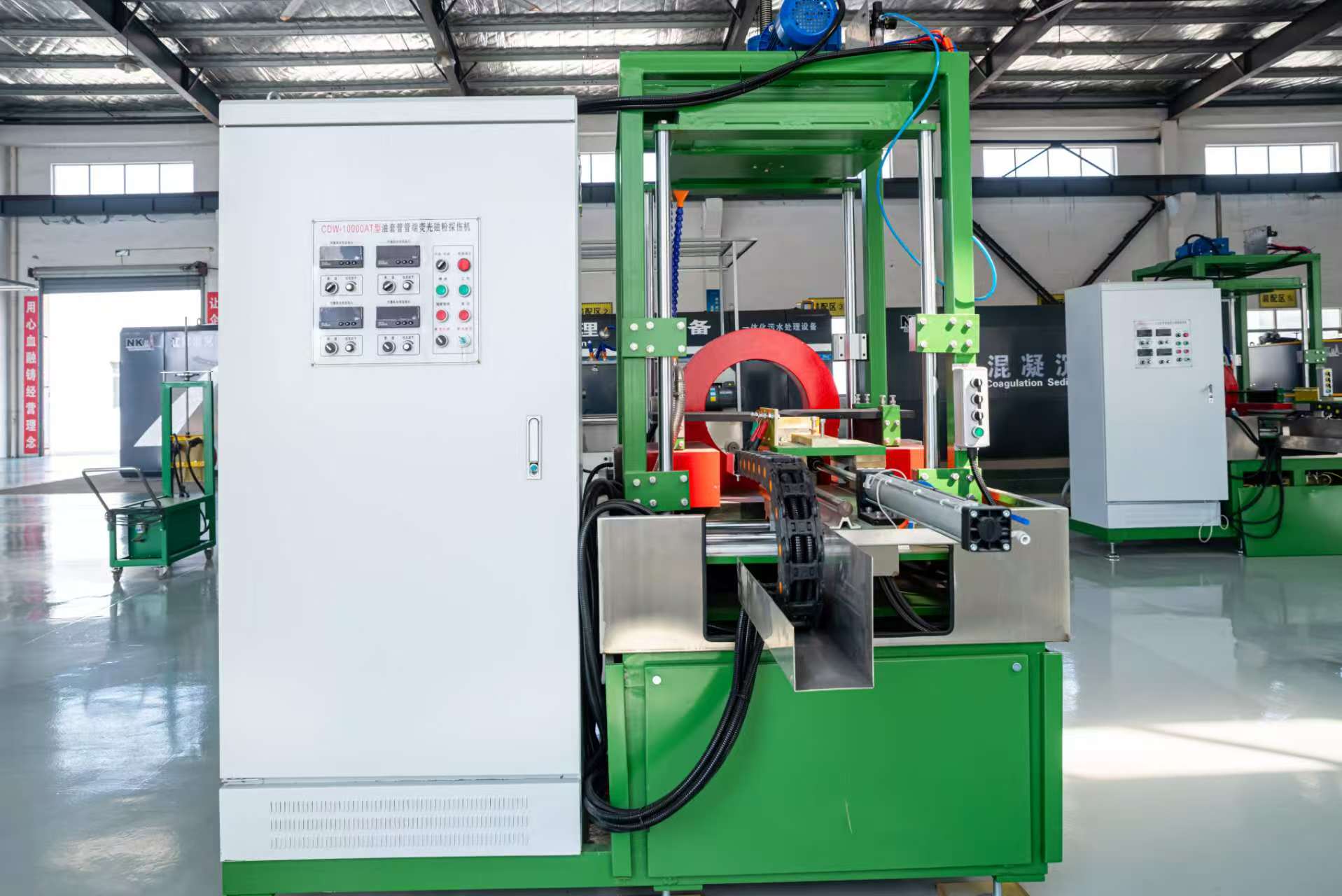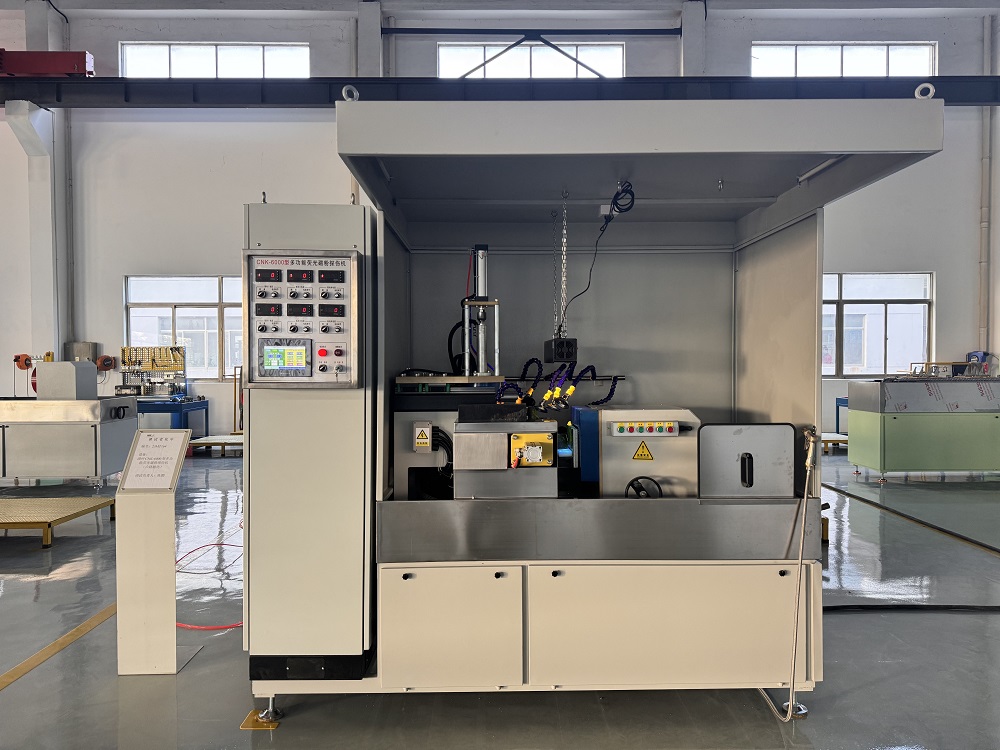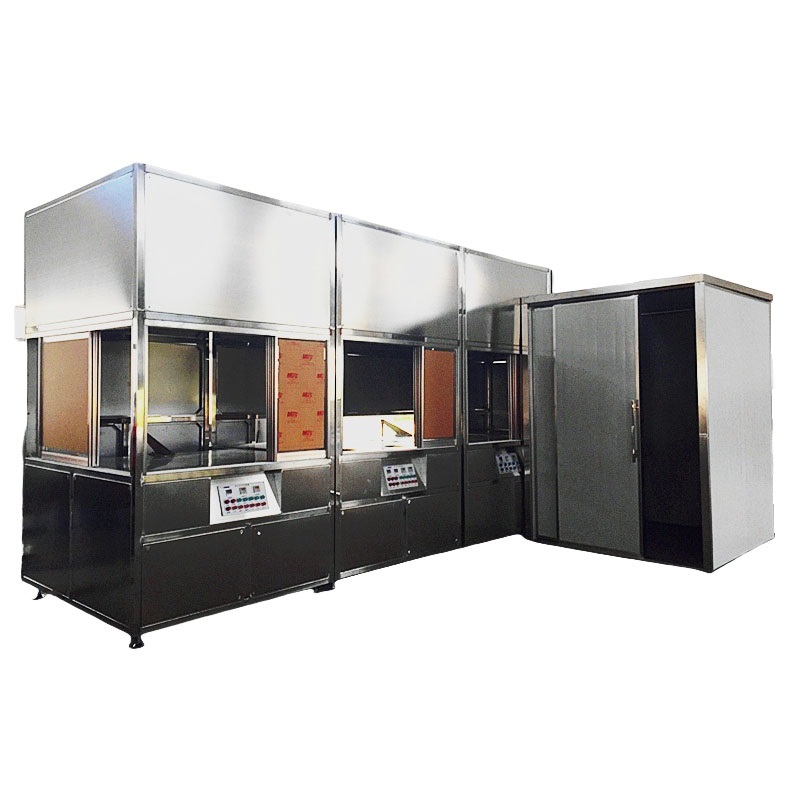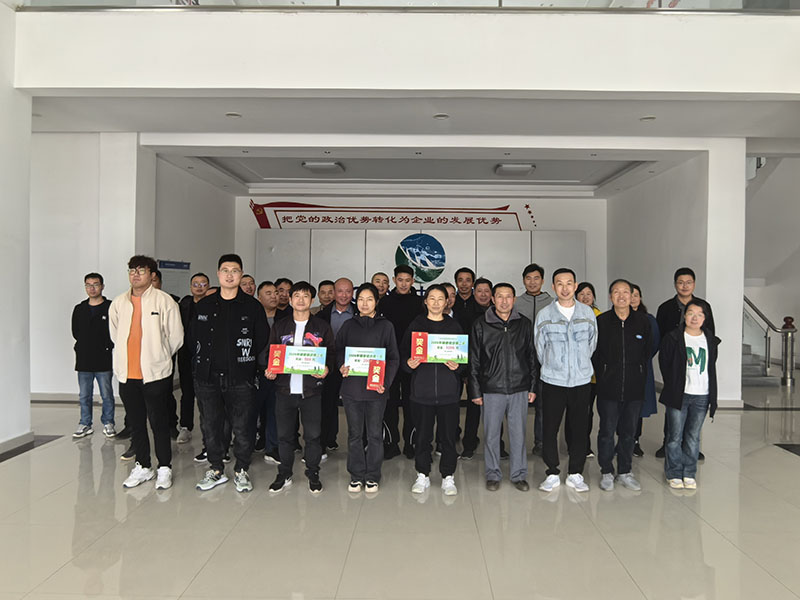Fluorescent Penetrant Inspection System
The Fluorescent Penetrant Inspection System is designed for fixed-position equipment in high-volume production lines, typically using water-washable or post-emulsifiable penetrant methods. It comprises seven key components: pre-cleaning, penetrant application, emulsifier application, water washing, drying, developer application, and post-cleaning devices.
1 Pre-Cleaning Device
The pre-cleaning device ensures workpieces are clean and dry for inspection. Equipment includes trichloroethylene vapor degreasing tanks, solvent cleaning tanks, ultrasonic cleaners, alkaline or acidic etching tanks, detergent cleaning tanks, and rinse spray guns.
2 Penetrant Application Device
This device ensures uniform penetrant application across workpiece surfaces, with provisions for recovering excess penetrant to minimize waste. It includes:
- Penetrant Tank: Sized for the largest workpieces with adequate clearance and depth, marked with a normal liquid level, and a 15 cm margin to prevent splashing. Two valves are fitted: one 75-100 mm from the bottom for draining clean penetrant and another at the base for removing oil and water.
- Drip Rack: Integrated with the tank, allowing excess penetrant to flow back. For non-immersible workpieces, small pumps with hoses and nozzles are used for spraying. In cold regions, heating devices may be added. Tanks are made of carbon steel, leak-tested by applying penetrant to internal welds and checking for external seepage.
3 Emulsifier Application Device
For post-emulsifiable methods, this device applies emulsifier to mix with penetrant, enabling water washing without removing defect-entrapped penetrant. Immersion is ideal, but spraying is used for large workpieces with multi-directional nozzles for uniform coverage. The device includes an emulsifier tank and drip rack, made of carbon steel with a stirrer for periodic mixing, avoiding compressed air to prevent foaming.
4 Water Washing Device
This device removes excess penetrant from surfaces without dislodging defect-entrapped penetrant, avoiding over-washing. Automated spray systems ensure water reaches all surfaces. Tanks use compressed air agitation via two 12 mm pipes with holes every 3 cm, maintaining water at 15-25°C and 0.15-0.29 MPa pressure. Tanks are stainless steel to prevent corrosion. Spray tanks have adjustable nozzles, and manual spray guns are used for targeted cleaning. Water is purified with activated carbon filters for recycling.
5 Drying Device
Hot air circulation drying devices with thermostatic control operate at 65-80°C to avoid damaging fluorescent or colored dyes. Tests include:
- Heating Test: From 20°C to 110°C in ≤40 minutes.
- Constant Temperature Test: Maintain 110°C for 1 hour, with four points within ±5°C of the set value.
- Temperature Recovery Test: Return to 110°C within 8 minutes after opening for ≤1 minute.
6 Developer Application Device
Placement depends on developer type: wet developers are applied before drying, dry developers after.
- Dry Developer: Applied in a conical-bottom spray cabinet with powder dispersed by fans or compressed air. A grid supports workpieces, and a sealed cover prevents powder escape. Excess powder is blown off gently.
- Wet Developer: Applied via a tank with agitation and thermostatic control, made of stainless steel and leak-tested.
7 Post-Cleaning Device
This device removes residual penetrant and developer, using water-detergent cleaning for small parts or solvent cleaning, ensuring workpieces are clean for use.
8 Integrated System
Devices are arranged in linear, U-shaped, or L-shaped configurations based on workpiece size, quantity, and site conditions. Workpieces are transported via rollers, cranes, or both. Integrated systems are called complete setups, while individual devices are separation setups.
9 Electrostatic Spray Device
For large workpieces, this device uses a 100 kV negative potential on nozzles to charge penetrant or developer, attracted to grounded workpieces. Components include a 100 kV electrostatic generator, powder hopper cabinet, high-pressure air pump, and spray guns with safety triggers and conductive liquid cables. Benefits include:
- On-site operation without tanks or cabinets.
- Over 70% of sprayed material adheres, reducing waste and maintaining cleanliness.
- Uniform coverage enhances sensitivity, using fresh penetrant without contamination risks.
Contact us to get better Fluorescent Penetrant Inspection System solutions.



